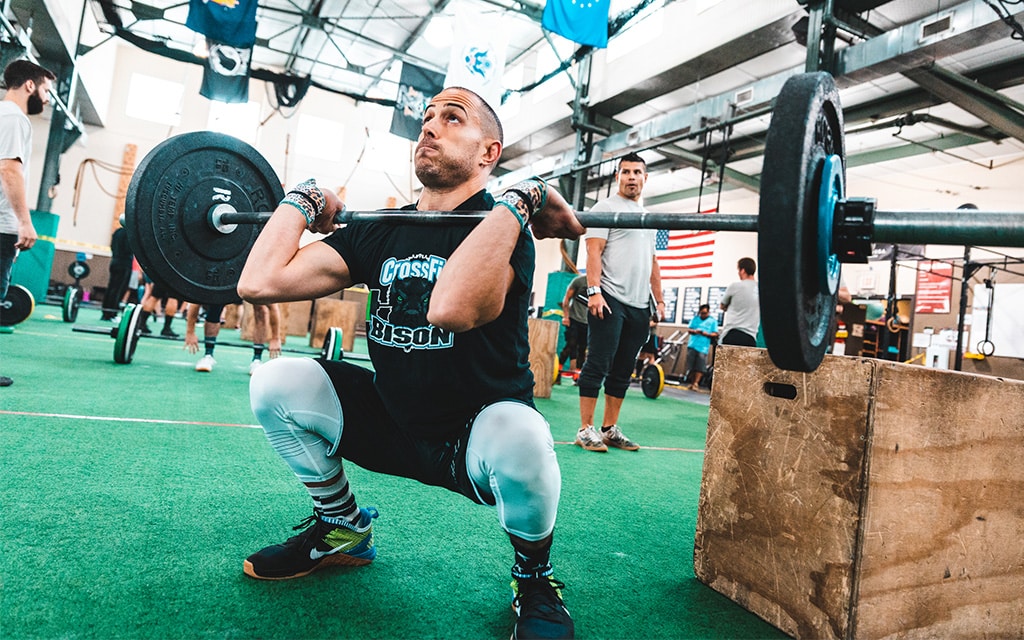Wrist wraps: A standard component of the CrossFit uniform, right? Many beginner athletes notice that these new movements often make their wrists ache. They look around and see their classmates with some cool fabric around their wrists. Wrist wraps provide stability and compression on the wrist joint during lifts. Believe it or not, there’s no magic PR dust in wrist wraps, and you shouldn’t be wearing them constantly. Read below for some guidance.
When to use them
- Heavy, low reps of overhead lifts. If you’re working up to a max overhead squat, you’re testing your body’s balance, core and leg strength. You don’t want your wrists to be the limiting factor in setting this PR. Wrist wraps provide the stability you need to put your focus on the key body parts in play during the lift.
- Metcons with high repetitions of overhead lifts. While working on wrist strength is a positive thing, the focus of a metcon is to get in a high intensity training session. Think Grace, Isabel or DT: you don’t want your wrists to prevent you from pushing yourself during these workouts. Even if the weight itself isn’t necessarily heavy, the repetitions can put a lot of strain on your wrists over time.
- Handstand push-ups and walks. Generally, wrist wraps are used in overhead barbell or dumbbell lifts. A handstand push-up is essentially an “overhead” lift – just upside down. And let’s be real, your entire bodyweight is resting over the surface of your hands. A little support is a good thing in this situation.
When to avoid them
- Any lift that isn’t overhead. You do not need to wear or rely on wrist wraps for every lift – especially lifts that don’t involve supporting weight over your head. Leave them in the locker for squats, pull-ups, etc.
- Lower weight overhead strength sessions. It can be beneficial to work on some overhead lifts “raw.” After all, it would be nice to simply have stronger wrists, right? Try going without the wraps for overhead lifts at moderate to lower weights in strength portions to work on your wrist strength and flexibility. Make sure to warm up with some wrist mobility work.
- During cardio. Do we need to explain this one? If you’re looking for a sweat absorber, try some regular sweat bands. You don’t need the compression.
Wrist wrap options
- Velcro wrist wraps like these with a hook-and-loop closure are very easy to get on and off, and even absorb sweat, keeping it off your hands. They come in a standard width and are only slightly adjustable.
- Fabric wrist wraps like these are more streamlined and less bulky. They can be adjusted on the fly by twisting them.
- If you also want hand protection wrist wraps like these include full palm protection in a gymnastics-style hand grip.
Photo courtesy of AMRAP Fitness. Taken at the BoxLife Games @ AMRAP Fitness














